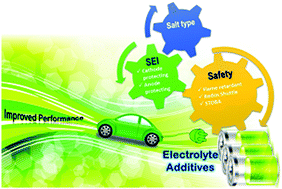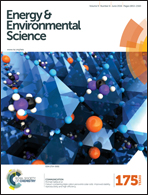Electrolyte additives for lithium ion battery electrodes: progress and perspectives
Abstract
The need for lighter, thinner, and smaller products makes lithium ion batteries popular power sources for applications such as mobile phones, laptop computers, digital cameras, electric vehicles, and hybrid electric vehicles. For high power applications, the development of high capacity and high voltage electrode materials is in progress. Battery performance and safety issues are also related to the properties of the electrolytes used. To improve the properties of the electrolytes, small amounts of other components, known as electrolyte additives, are incorporated. This paper reviews the recent progress in electrolyte additives used to improve performance and other properties, such as safety. This review classifies the additives based on their functions and their effects on specific electrode materials focusing on electrodes under current development. From anodes: carbonaceous electrodes, silicon, tin and Li4Ti5O12; from layered cathodes: LiCoO2, Li-rich and LiNiyMnyCo1−2yO2 (NMC); from spinel: LiMn2O4, and from olivine: LiFePO4 are selected. We believe that this approach will help readers easily identify and understand the additives suitable for their target materials.



 Please wait while we load your content...
Please wait while we load your content...